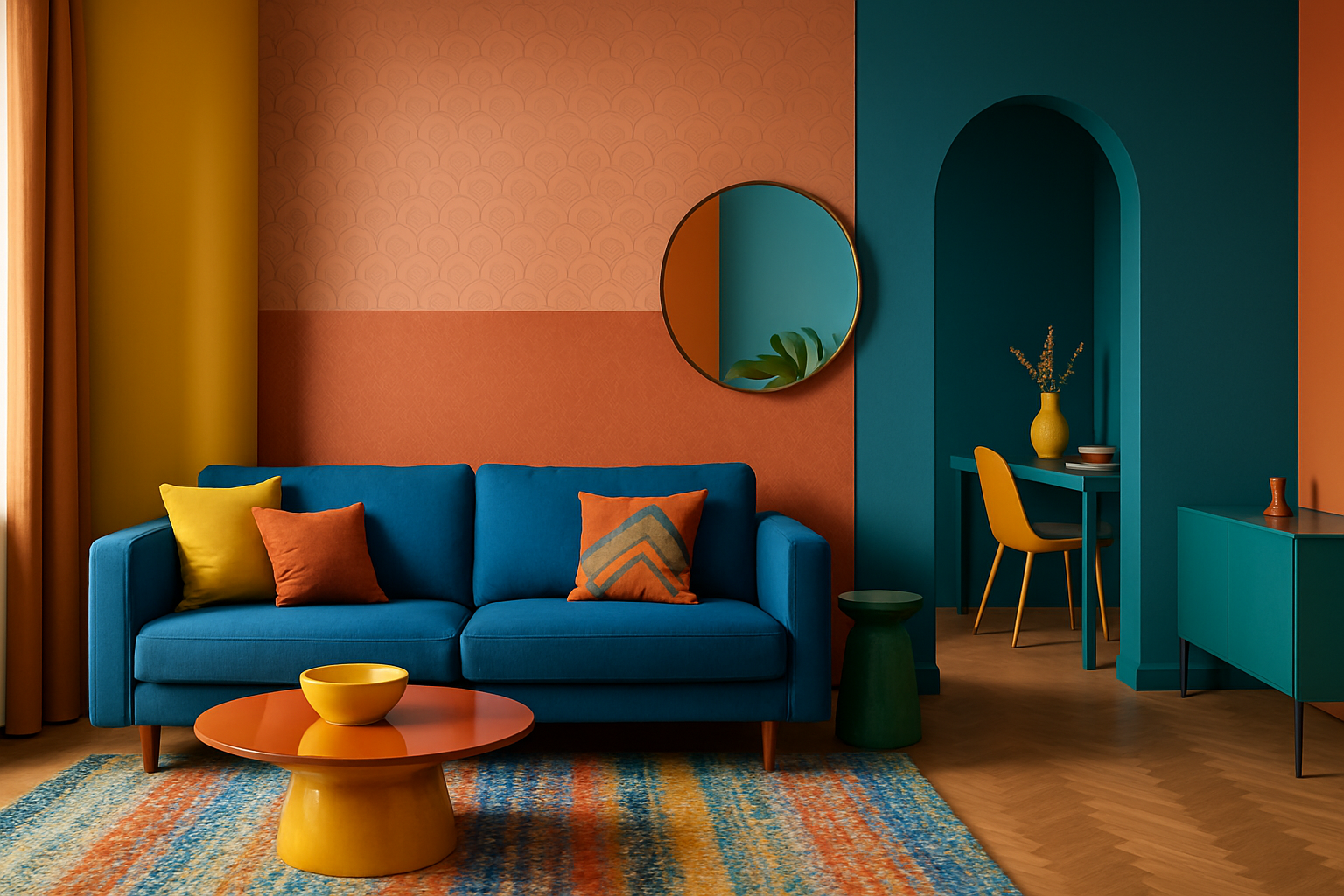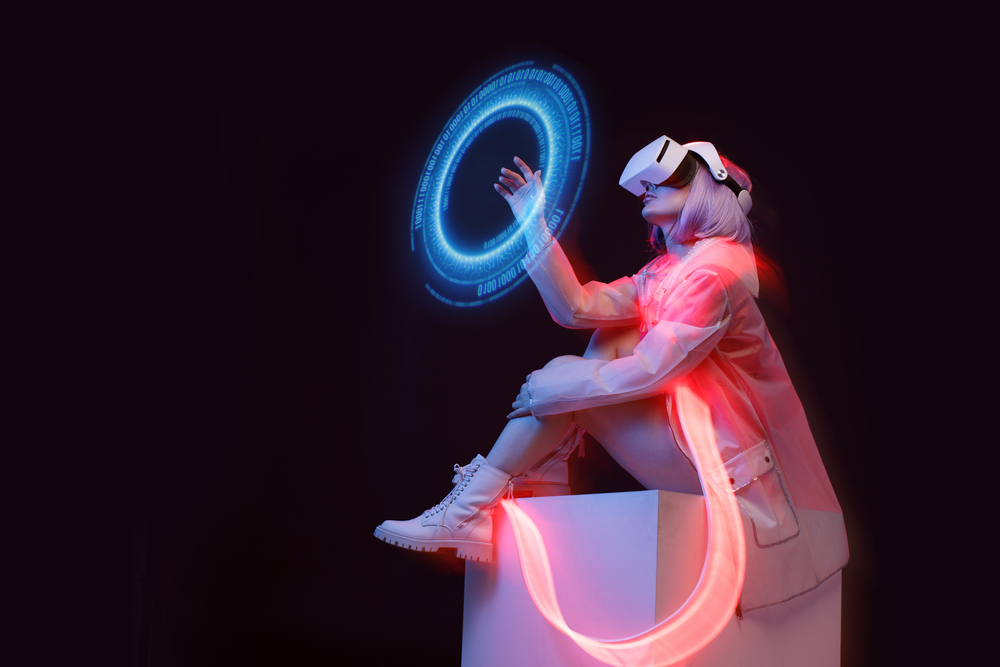The Chroma Renaissance: Vibrant Hues Reshape Home Design
In a world once dominated by neutral palettes, a daring color revolution is underway. Homeowners and designers alike are embracing the Chroma Renaissance, a bold movement that infuses living spaces with vibrant, saturated hues. This article delves into the exciting world of color-centric design, exploring how this trend is reshaping our homes and our relationship with the spaces we inhabit.

The Psychology of Color in Home Design
Color has long been recognized for its profound impact on human psychology and behavior. In the context of home design, this understanding has taken center stage. Vibrant hues are now being strategically employed to influence mood, productivity, and overall well-being within living spaces.
Research has shown that different colors can evoke specific emotional responses. For instance, blues and greens are often associated with calmness and tranquility, making them ideal for bedrooms and bathrooms. On the other hand, warmer tones like reds and oranges can stimulate conversation and appetite, making them perfect for dining areas and social spaces.
The Chroma Renaissance takes this knowledge a step further, encouraging homeowners to use bold, saturated colors to create intentional atmospheres within their homes. By harnessing the psychological power of color, individuals can craft spaces that not only look stunning but also support their emotional and mental well-being.
Chromatic Zoning: A New Approach to Space Division
One of the most innovative aspects of the Chroma Renaissance is the concept of chromatic zoning. This technique involves using color to delineate different areas within an open-plan space, creating visual boundaries without the need for physical walls.
Chromatic zoning allows for greater flexibility in home design, particularly in smaller spaces or loft-style apartments. By assigning distinct colors to different functional areas, homeowners can create the illusion of separate rooms while maintaining an open, airy feel.
For example, a vibrant yellow might be used to define a home office area within a larger living space, while a deep blue could denote a relaxation zone. This approach not only adds visual interest but also helps to organize the space functionally, guiding inhabitants and visitors through the home’s various zones.
The Art of Color Blocking in Interior Design
Color blocking, a technique borrowed from the fashion world, has found a new home in interior design. This bold approach involves juxtaposing large areas of contrasting colors to create striking visual effects.
In the context of the Chroma Renaissance, color blocking is being used to create focal points, define architectural features, and add depth to spaces. For instance, a vivid purple accent wall might be paired with a mustard yellow sofa, creating a dynamic and eye-catching composition.
The key to successful color blocking lies in balancing complementary and contrasting hues. Designers are experimenting with unexpected color combinations, pushing the boundaries of traditional color theory to create spaces that are both harmonious and visually exciting.
Texture and Pattern: Enhancing the Chromatic Experience
While color takes center stage in the Chroma Renaissance, texture and pattern play crucial supporting roles. The interplay between vibrant hues and varied textures adds depth and dimension to spaces, preventing them from feeling flat or overwhelming.
Designers are incorporating a wide range of textures, from plush velvets to rough-hewn woods, to create tactile experiences that complement bold color choices. Similarly, patterns are being used to break up large blocks of color and add visual interest.
The combination of color, texture, and pattern creates a multi-sensory experience within the home. A richly hued velvet sofa might be paired with a geometric patterned rug, while textured wallpaper in a complementary shade adds depth to the overall design. This layered approach ensures that even the boldest color choices feel balanced and sophisticated.
The Role of Lighting in the Chroma Renaissance
Lighting plays a crucial role in the Chroma Renaissance, as it can dramatically affect how colors are perceived within a space. Natural and artificial lighting sources are being carefully considered to enhance and modulate the impact of bold color choices.
Designers are experimenting with different lighting temperatures and intensities to bring out the best in vibrant hues. For example, warm lighting can intensify reds and oranges, while cool lighting can enhance blues and greens. Smart lighting systems are being employed to allow homeowners to adjust the mood and atmosphere of their spaces throughout the day.
Additionally, the strategic use of mirrors and reflective surfaces is helping to amplify the impact of bold colors, creating the illusion of larger, more dynamic spaces. By carefully considering lighting in conjunction with color choices, designers are able to create spaces that feel alive and ever-changing.
Embracing Individuality: Personalized Color Palettes
Perhaps the most significant aspect of the Chroma Renaissance is its emphasis on individuality. Unlike previous design trends that prescribed specific color palettes, this movement encourages homeowners to embrace their personal color preferences and create spaces that truly reflect their personalities.
Color consultants and interior designers are working closely with clients to develop personalized color schemes that resonate on a deep, emotional level. This might involve drawing inspiration from a favorite piece of art, a cherished travel memory, or even the colors of a beloved pet.
The result is homes that feel authentically personal and deeply connected to their inhabitants. The Chroma Renaissance is not about following a set of rules, but about empowering individuals to express themselves through color in bold and exciting ways.
In conclusion, the Chroma Renaissance represents a vibrant and exciting shift in home design. By embracing bold colors, innovative techniques, and personal expression, this movement is transforming our living spaces into dynamic, energizing environments that reflect our individual personalities and enhance our daily lives. As we continue to push the boundaries of color in design, our homes are becoming more than just places to live – they’re becoming works of art in their own right.





